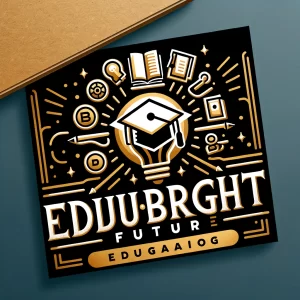Language learning apps have revolutionized the way languages are taught and learned, particularly in college settings. These apps offer interactive, flexible, and personalized learning experiences that complement traditional language courses, enhancing the overall effectiveness of language education. This article explores the benefits of language learning apps, strategies for integrating them into college curriculums, the challenges faced, and the future outlook of this transformative educational tool.
Benefits of Language Learning Apps
Personalized Learning Paths
One of the significant advantages of language learning apps is their ability to tailor lessons to individual learners. Personalized learning paths adapt to the student’s pace and style, making the learning experience more engaging and effective. Features such as adaptive quizzes, customized vocabulary lists, and targeted grammar exercises help ensure that each student receives instruction that is most relevant to their current level and needs.
- Enhanced Retention: By catering to individual learning styles, apps can significantly improve retention rates and language proficiency.
- Increased Engagement: Interactive and gamified elements within the apps keep students motivated and invested in their learning journey.
Accessibility
Language learning apps provide unparalleled accessibility, allowing students to practice and learn at their convenience. This flexibility is particularly beneficial for college students who often juggle busy schedules.
- Anytime, Anywhere Learning: Students can access lessons and practice exercises from their smartphones, tablets, or computers, making it easier to fit language study into their daily routines.
- Self-Paced Learning: Apps allow students to learn at their own pace, which is especially useful for those who may need more time to master certain concepts.
Interactive Tools
The interactive tools provided by language learning apps enhance the learning experience by making it more immersive and practical. Features like voice recognition and real-time feedback help students improve their pronunciation and overall language skills more effectively than traditional methods alone.
- Voice Recognition: Helps students practice speaking and receive immediate feedback on their pronunciation and fluency.
- Real-Time Feedback: Immediate correction of mistakes helps reinforce learning and prevent the consolidation of errors.
Integrating Apps with Traditional Learning
To maximize the benefits of language learning apps, colleges are finding innovative ways to integrate these tools into their language programs.
Supplementary Practice
Apps are increasingly being used as supplementary tools to reinforce classroom lessons. They provide additional practice opportunities outside of class, helping students consolidate their learning.
- Homework Assignments: Teachers can assign specific app-based exercises to complement the topics covered in class.
- Review and Reinforcement: Students can use apps to review lessons and practice skills, ensuring better retention and understanding.
Blended Learning Environments
Combining app-based learning with traditional classroom interactions creates a blended learning environment that enhances the overall educational experience.
- Flipped Classrooms: Students can learn new concepts through the app before coming to class, where they can engage in deeper discussions and practice.
- Interactive Class Activities: Apps can be used during class for interactive activities, such as language games or collaborative projects.
Challenges of Using Language Apps
Ensuring Educational Quality
With the plethora of language learning apps available, ensuring that the selected apps are pedagogically sound and offer accurate, useful content is crucial.
- Quality Control: Educators must evaluate apps based on their content quality, instructional design, and alignment with curriculum standards.
- Accreditation and Standards: Choosing apps that meet educational standards and are accredited by recognized bodies ensures that students receive high-quality education.
Maintaining Student Engagement
While apps can be engaging, sustaining student motivation over time can be challenging. It is essential to ensure that the apps are not only interesting but also effective in meeting learning objectives.
- Regular Monitoring: Educators need to monitor student progress and provide guidance to keep students on track.
- Incentives and Rewards: Incorporating incentives and rewards within the app can help maintain student interest and motivation.
Looking Ahead
As technology continues to advance, the use of language learning apps in education is expected to grow, further transforming how languages are taught and learned in college environments.
Future Innovations
- Artificial Intelligence (AI): AI-driven apps can provide even more personalized learning experiences by continuously adapting to student performance and learning styles.
- Virtual Reality (VR) and Augmented Reality (AR): These technologies can create immersive language learning environments that mimic real-life scenarios, enhancing practical language use.
- Integration with Wearable Technology: Wearable devices can provide seamless and convenient language practice opportunities throughout the day.
Broader Adoption
- Institutional Support: Increased institutional support for integrating technology into the curriculum will likely lead to broader adoption of language learning apps.
- Cross-Disciplinary Applications: Language apps may be integrated into other academic disciplines, promoting interdisciplinary learning and global competence.
Continuous Improvement
- Feedback Loops: Regular feedback from educators and students will help developers refine and improve language learning apps.
- Ongoing Research: Continued research into the effectiveness of these tools will guide best practices and inform future developments.
Conclusion
Incorporating language learning apps into college curriculums represents a significant advancement in educational technology. These apps provide personalized, accessible, and interactive learning experiences that enhance traditional language education. While challenges such as ensuring educational quality and maintaining student engagement exist, the benefits far outweigh the drawbacks. As technology continues to evolve, the integration of language learning apps in education will likely expand, offering innovative solutions to prepare students for a globalized world. By embracing these tools, colleges can enhance language learning outcomes and provide students with the skills they need to succeed in an increasingly interconnected world.
